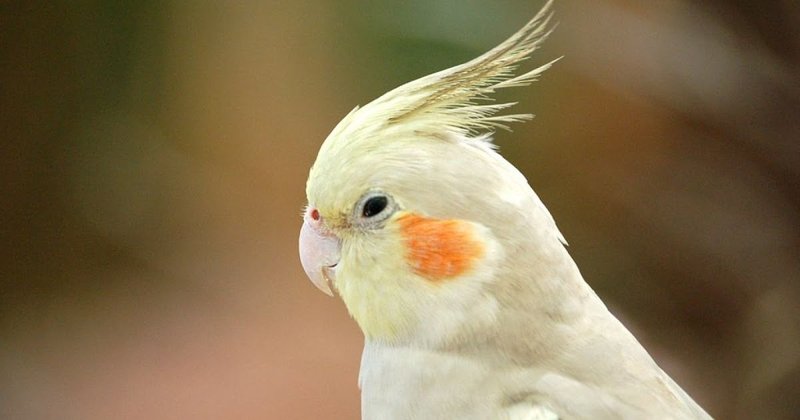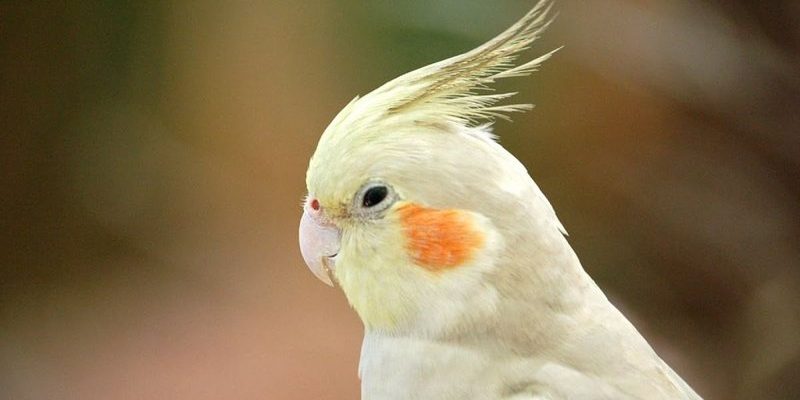
Imagine you’re out on a weekend hike, the sun is shining, and the birds are chirping. You hear a playful whistle echoing through the trees. Could it be a cockatiel? Knowing how to identify a cockatiel in the wild can not only enhance your experience but also deepen your appreciation for nature. So, grab a cup of coffee and let’s dive into the features you should look for when trying to spot these delightful birds.
What Do Cockatiels Look Like?
First off, let’s talk about their appearance. Cockatiels are medium-sized parrots, typically around 12 to 14 inches long. Their most striking feature is their crest, a tuft of feathers on their heads that can be raised or lowered based on their mood. When they’re excited or curious, you’ll see this crest stand tall, almost like a little crown.
The coloration of cockatiels can vary widely. The most common type you’ll see has a gray body with bright yellow on the face and under the tail. Males often have vibrant orange patches on their cheeks, while females tend to have more muted colors. Keep an eye out for these cheek patches—they’re a sure sign you’re looking at a male. If you spot a cockatiel with a solid gray body, chances are it’s a female!
One thing to note: If you’re observing a wild cockatiel, you might not see these colors as vividly as in pet cockatiels. In the wild, they blend into their surroundings, which means their hues can appear more subdued.
Where Do Cockatiels Live?
Now that you know what cockatiels look like, let’s discuss where you can find them. Cockatiels are typically found in open woodlands, grasslands, and along edges of forests. They prefer areas with plenty of trees for perching and nesting, so keep your eyes peeled in such habitats.
In Australia, cockatiels are widespread, particularly in the eastern and northern regions. If you’re lucky enough to be in their native habitat, look for them near water sources like rivers or lakes. They usually gather in small flocks, making their presence easier to spot.
However, spotting a cockatiel in the wild may be a bit tricky due to their natural camouflage. Here’s the thing: being quiet and patient is key. Sudden movements or loud noises can scare them away. So, take your time and enjoy the sounds of nature while you observe.
Listening for Their Calls
One of the most enjoyable ways to identify a cockatiel is by its call. Cockatiels are known for their sweet whistling and chattering sounds. You might hear a series of melodic whistles, often mimicking other birds or sounds they’ve picked up from humans. It’s kind of like they’re trying to have a conversation!
Here’s a fun fact: a male cockatiel’s call is usually more vibrant and varied than a female’s. If you listen carefully, you might even hear them mimic the sound of a phone or a doorbell. So, if you’re on a walk and hear a playful tune, it could very well be a cockatiel inviting you to come closer!
When identifying their calls, try to familiarize yourself with the common sounds they make. You could even record their calls using your phone (with the right settings) for later reference. It’s like having your own personal birdwatching guide right in your pocket!
Behavior and Social Interaction
Cockatiels are social creatures, often found in flocks. When you spot one, pay attention to how it interacts with others. They usually engage in playful behavior, such as chasing each other or hopping from branch to branch. If you see a group of cockatiels, you’ll likely notice them grooming each other or sharing food. This social interaction is a key trait of their species.
When they’re feeding, cockatiels often forage on the ground. They’ll peck at seeds and small plants, which is another behavior to watch for. If you’re near grassy areas, check for movement among the grasses; they might be busy looking for a snack!
Also, be aware of their flight patterns. Cockatiels prefer short flights and can be seen fluttering from tree to tree. If you spot a bird taking off with a burst of excitement, there’s a good chance it’s a cockatiel, especially if it has a quick, erratic flight style.
Protecting Cockatiels in the Wild
Cockatiels might be common in their native habitats, but they’re not free from threats. Urbanization and habitat destruction can put pressure on their populations. If you’re lucky enough to spot one, consider supporting their natural habitats. You might not think much about trees or grasslands, but these areas are crucial for their survival.
Whether you’re hiking, birdwatching, or just taking a stroll in nature, be respectful of their space. Try to stay on marked paths, keep your distance, and avoid disturbing their nest sites.
Additionally, organizations focused on wildlife conservation often need volunteers or donations. By getting involved, you can contribute to preserving the environments these charming birds call home.
Tools to Help You Spot Cockatiels
If you’re serious about birdwatching, a few tools can enhance your experience. A good pair of binoculars is essential—they allow you to see these lovely birds up close without intruding on their space. Look for binoculars that have a magnification of at least 8x for a clear view.
You might also consider bringing along a field guide to Australian birds. These books usually feature detailed images and descriptions, helping you distinguish cockatiels from similar species.
Additionally, using a bird identification app can be a fun way to document your findings. You can take notes, record calls, and save photos all in one place. Plus, many of these apps have communities you can connect with, sharing your experiences with fellow bird enthusiasts.
Final Thoughts
To sum it up, identifying a cockatiel in the wild can be a rewarding experience. From recognizing their distinct features and calls to understanding their behaviors, each step brings you closer to appreciating these delightful creatures.
So, whether you’re embarking on a hike or just enjoying your backyard, keep an eye—and ear—out for these wonderful birds. By learning more about cockatiels and their role in the ecosystem, you help ensure they thrive for future generations to admire. Ready to spot some cockatiels? Happy birdwatching!

